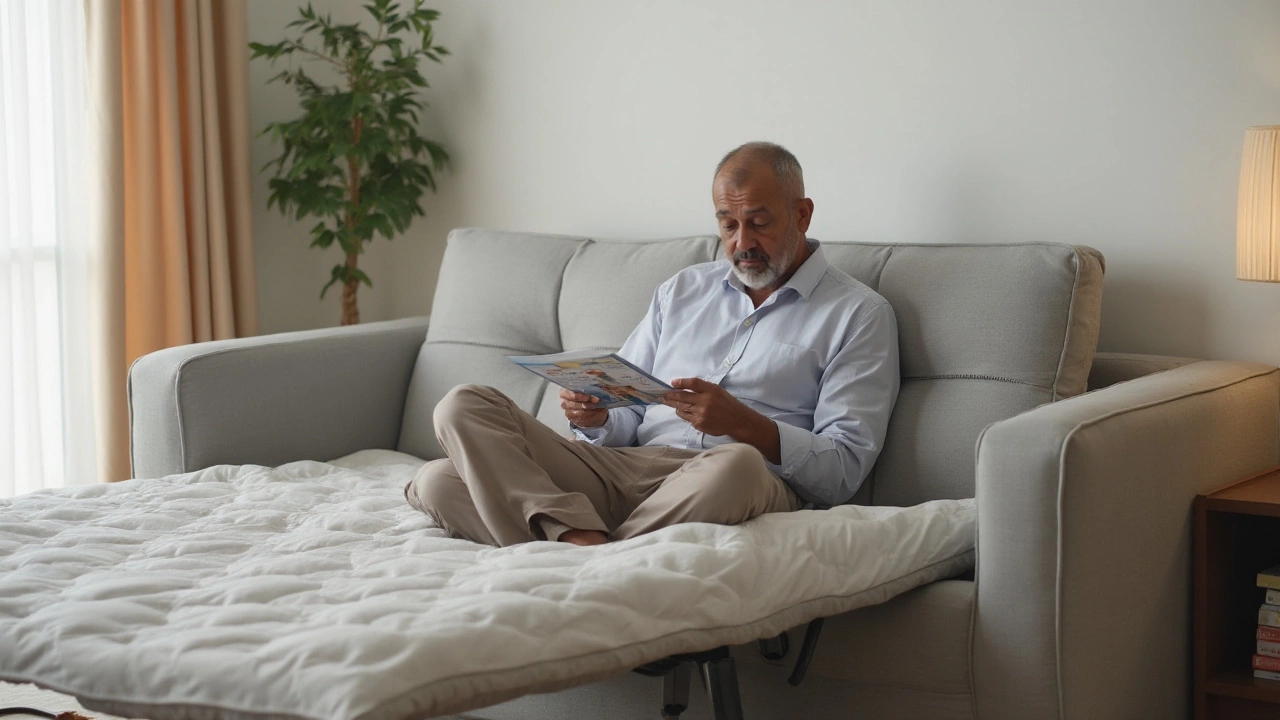Posture Tips for Sofa Comfort
If you love sinking into a couch but hate the sore back that follows, you’re not alone. Most people think a soft seat fixes everything, but the way you sit makes a huge difference. Good posture on a sofa helps you stay comfortable longer, reduces strain, and keeps your body ready for whatever you do next.
Why Good Posture Matters on the Sofa
When you slouch, the spine bends into an unnatural curve. Muscles work harder to hold you up, and after a few minutes you feel the ache. Over time, repeated slouching can lead to chronic neck or lower‑back pain. Even short TV marathons add up if you’re not using the couch correctly.
Besides health, posture affects how the sofa wears out. Even weight distribution prevents one spot from sagging, so your couch lasts longer. A well‑aligned seating position also looks better in photos – you’ll appear relaxed, not hunched.
Easy Ways to Improve Your Sitting Posture
1. Use the backrest. Sit all the way back so your shoulders rest against it. The back support should follow the natural curve of your spine, not push you forward.
2. Keep feet flat. Your feet should rest on the floor or a footstool. This aligns the hips and knees, keeping the lower back neutral.
3. Adjust cushion height. If the seat is too low, add a thin pillow to raise it. A higher seat lets your knees stay level with your hips, which is ideal for posture.
4. Mind the armrests. Use them to keep your elbows close to a 90‑degree angle. This reduces shoulder strain when you hold a remote or a book.
5. Take mini‑breaks. Every 30‑45 minutes, stand, stretch, or roll your shoulders. A quick move resets your muscles and prevents stiffness.
6. Choose the right sofa shape. Sectionals with a slight recline or sofas with built‑in lumbar support are natural posture boosters. If you shop for a new couch, look for these features.
7. Use a lumbar pillow. If your sofa lacks lower‑back support, a small cushion placed just above the hips can fill the gap and keep the spine aligned.
Putting these tips into practice doesn’t require a full remodel. Simple adjustments to how you sit can make your favorite couch feel like a supportive chair. Next time you settle in for a movie, check your back, feet, and arm positions. You’ll notice the difference right away, and your back will thank you later.
Can Sleeping in a Recliner Cause Back Problems?
Exploring whether spending nights in a recliner is a recipe for a sore back or a ticket to comfy resting, this article delves into how reclining impacts back health. It addresses common misunderstandings about the ergonomics of recliners, offering practical tips to spot a truly supportive chair. Emphasizing both comfort and health, the article is a handy guide for anyone thinking about taking their naps to a recliner.
Office Chairs That Wreck Your Posture: What to Avoid
Picking the right office chair can make or break your posture. Poorly designed chairs not only cause discomfort but may lead to serious long-term health issues. This article digs into common chair designs that harm posture and offers tips on selecting better options. Avoid the pitfalls of bad seating with practical insights and learn to spot red flags before purchasing.
Is Sleeping on a Sofa Bed Hurting Your Back?
Many people ponder whether it's harmful to catch their z's on a sofa bed. This article delves into how sleeping on a sofa bed impacts your back health. We explore the design of sofa beds, their firmness, and materials to understand their implications on the spinal posture. Helpful tips and alternatives are provided for those who frequently use sofa beds. Understanding these factors can help you make informed decisions about your sleep settings.







